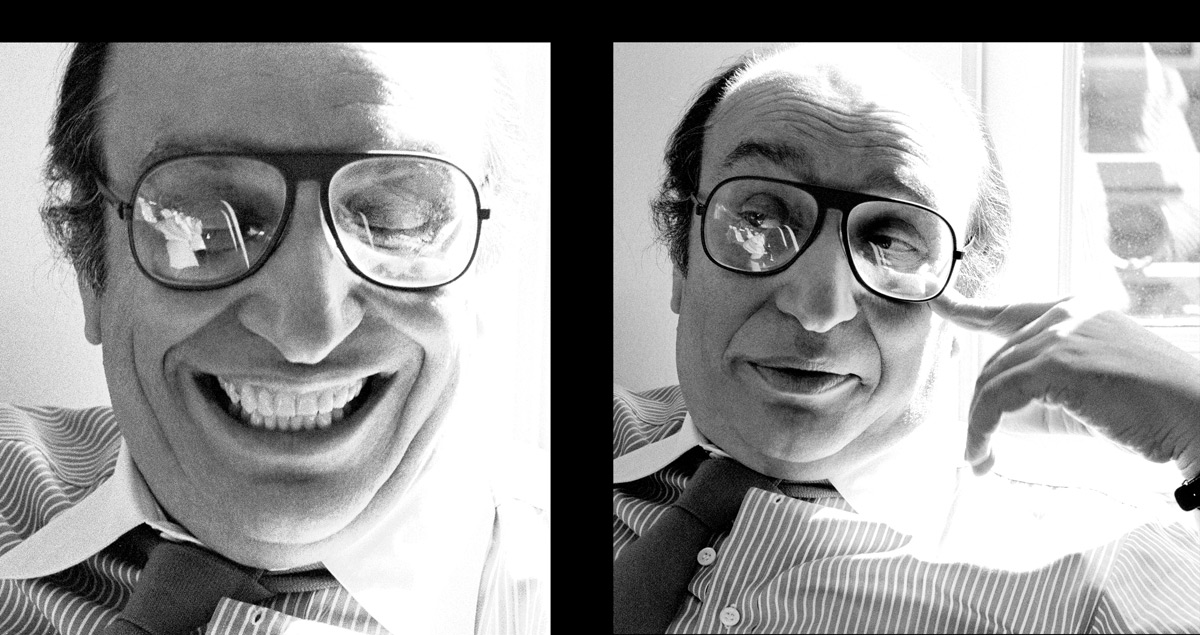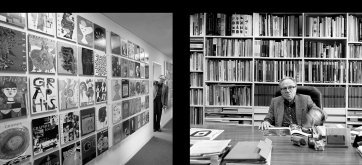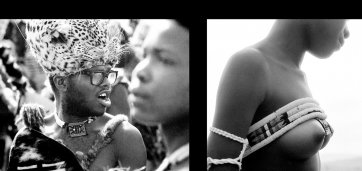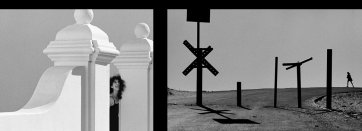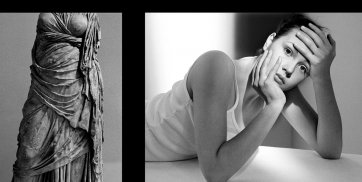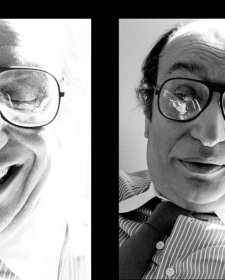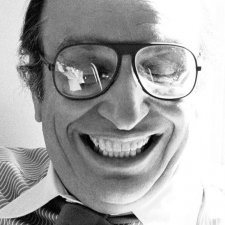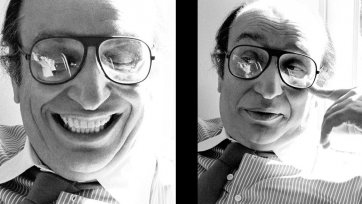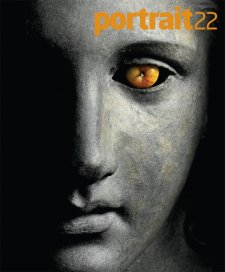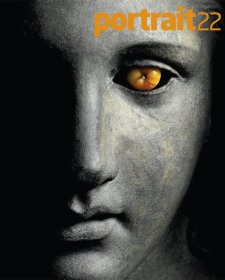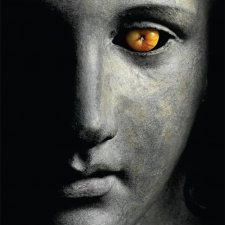Sam Haskins likes to think of himself as a graphic artist who uses photography as his medium, as an art director, as a story teller, also as a lover of good red wine and the music of Beethoven.
Haskins spent his youth on the African veldt, far removed from the culture of Europe that would eventually have such a profound influence on him. Art courses at school and college led to a three-year stay in post-war London and further photographic studies at the city’s College of Printing. Apart from the college work he immersed himself in the study and appreciation of the aesthetic wealth in abundance around him. In the reading room of the Victoria and Albert Museum he discovered Walter Herdeg’s Graphis magazine, featuring, among other joys, the work of Irving Penn. At that moment a whole new universe opened up for him. One discovery led to another, culminating in a breathless chase to embrace the whole mini cultural renaissance of post-war Britain. Over the ensuing years Haskins was to meet and photograph many of the figures he most admired in the worlds of design, art, writing and photography – Herdeg himself, designer Milton Glaser, painter Peter Blake, sculptors George Segal and Max Bill, ceramicist Lucie Rie, writer Arthur Koestler and photographer Andreas Feininger among them.
As an escape from the strictures involved in the practice of advertising and editorial photography Haskins later embarked on a range of personal projects. A dedicated bibliophile, he gravitated towards the making of books. Books of images. Some told a little story, others documented people and places, but all strove to share Haskins’s visual thoughts. His first book, Five Girls, created a stir when it appeared in the early sixties. It swept like a fresh breeze across the still waters of figure photography. He stripped the nude of all hesitancy, cliché and vulgarity – making it fun, proud and a celebration.
Then came Cowboy Kate and Other Stories, a photo book in narrative form. It is the tale of a gun-toting young woman who made her distinctive mark on the Old West. Tuning into the universal language emanating from Hollywood, Haskins manipulated the stock paraphernalia of Westerns to tell his story. The book had a tumultuous welcome. Virtually every photographic journal in the world printed an enthusiastic review. Copies were smuggled into Soviet occupied East Germany and passed on from hand to hand. Divorcing couples fought over possession and France awarded it the Prix Nadar.
Other books followed. November Girl (1966) made extensive use of multiple imagery, an approach that developed into an ongoing enthusiasm. African Image (1967) celebrated the magnificence of tribal art and craft in the sub Saharan African continent. Haskins Posters (1973), inspired by the social revolution that gained momentum in Europe from 1968, further developed his graphic ideas. It was awarded the Gold Medal of the New York Art Directors Club. Photo Graphics in 1980 extended his graphic exploration.
The early 1970s saw the first of Sam’s well-known ‘Apple and Eve’ montage images, tinged with more than a touch of surrealism. In these series he combined and superimposed components in order to expand an idea and intrigue the eye, often by virtue of their disparity. His enthusiasm for manipulating multiple pictorial elements resulted in the double-page spread idiom used in the National Portrait Gallery exhibition, Portraits and Other Stories. Haskins thinks of it as a graphic pas de deux that owes much of its concept and structure to the pioneering work of Alexey Brodovitch and Willy Fleckhaus.
Over the 1970s, 1980s and 1990s Haskins created fifteen calendars for camera giant Pentax, giving rise to shows in the Pentax galleries in London, Tokyo, Osaka, Rotterdam and Zurich. In 1984 the City of Bologna invited Haskins to create a body of work depicting aspects of their town that he found interesting. His enthusiasm for the project was realised in Sam Haskins a Bologna. ‘Bologna is a montage maker’s dream,’ he wrote. ‘Layer upon transparent layer of cultural history is still clearly visible and culminates in a final veneer of late twentieth century industrial detritus – it is a living montage. Finely sculpted porticos over endless arcades snake their way through the old town ... Diesel buses filled with passengers that resemble the Lombards trundle past Thirteenth Century Palazzos ... Old ladies in pairs, dressed in black, visit the porno cinema in the basement of a medieval castle. As elsewhere in Europe, the brief flowering of the Art Nouveau movement left traces of freshness that lifts the spirit and makes a welcome contra statement to the tired stones.’ The book was launched at an exhibition of Haskins’s photographs of the city held in the Galleria Accursio di Palazzo Comunale in early 1984.
In 1991 Sam undertook a six-week shoot in Barcelona for an exhibition in the Pentax Forum Gallery in Tokyo. ‘Barcelona is a visual carnival. A perfect joy. A place where creative giants roamed. It boasts facets that range from sublime Gothic structures to the most flamboyant fantasies made real by the likes of Antoni Gaudi, Josep Domenech i Montaner and Joan Miro. The breadth and diversity is breathtaking.’
Since he moved to Australia with his wife Alida in 2002, Haskins has continued to work on commercial assignments that attract him, while pursuing his own interests and embracing the potential of new imagemaking technologies. He has not lost his enviable ability to capture cool, fresh images of beautiful women. In recent years he has photographed Italian supermodel Mariacarla Boscono for Japanese Vogue, actor Emmanuelle Seigner for Paris Vogue and Nicole Kidman, Naomi Watts, Cate Blanchett and Elle Macpherson for Harper’s Bazaar. Cited as an influence by a new generation of fashion designers and style setters – Sofia Coppola, for example, has acknowledged the visual sway of his work on her film The Virgin Suicides – he has been called, to his amusement, the ‘rediscovered master’ of fashion photography. The National Portrait Gallery does not claim to have discovered Haskins, but is delighted to present the first retrospective of his work across many years and genres.
